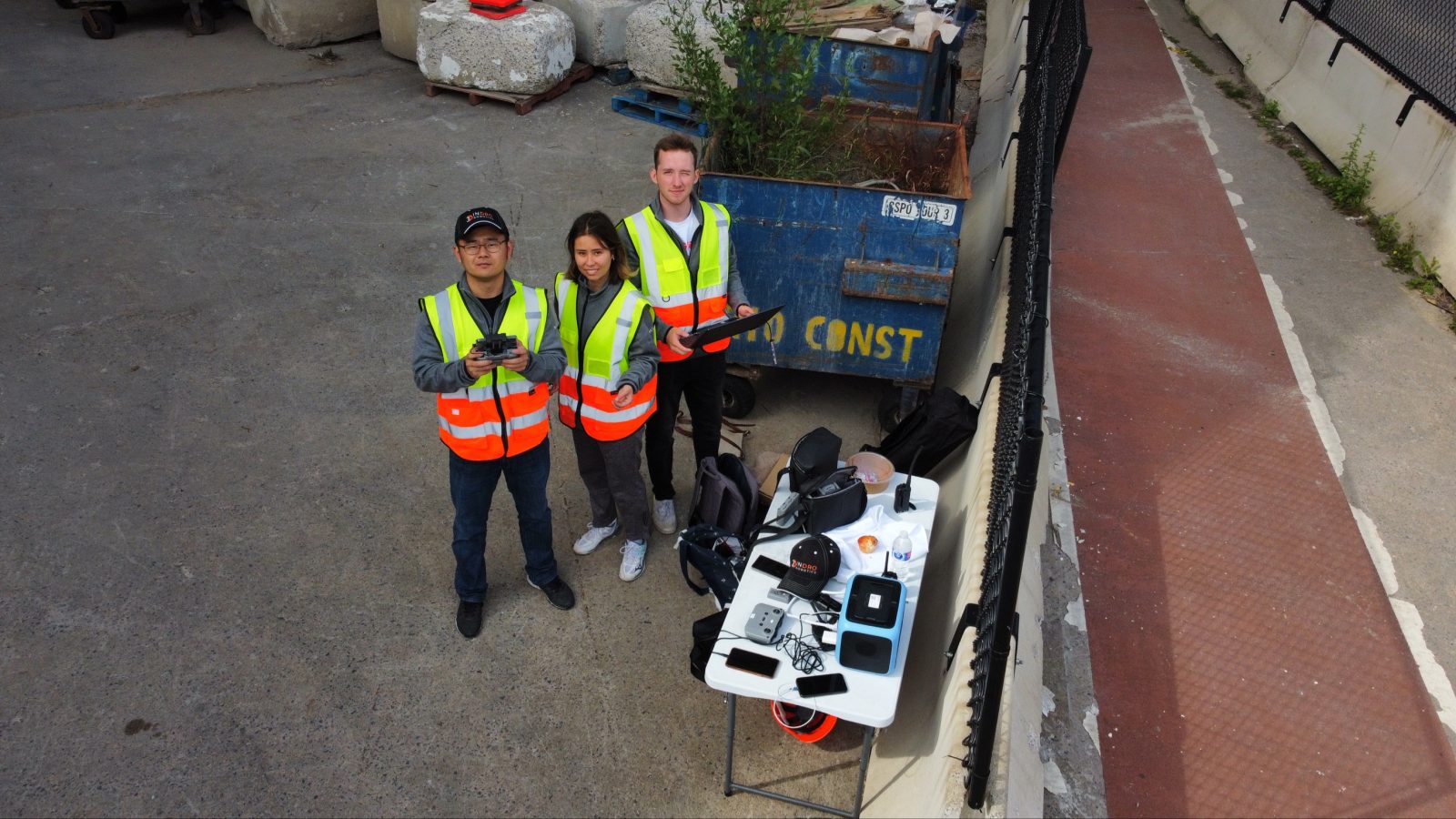
A research project experimenting with drones to identify overexerted athletes in states of distress turned into a real-life emergency medical response operation last weekend, when UAVs deployed to monitor the Montréal Marathon spotted an exhausted runner collapsing.
The transformation of that research to quasi-proof-of-concept demonstration occurred as pilots for Canadian robotics research and development company InDro Robotics flew a pair of drones above Montréal Marathon runners to test their potential for identifying athletes in distress, and keeping tabs of their location in the chaotic throng of racing environments until emergency medical responders can find them.
As it turned out, those capacities were considerable and most timely in spotting and dispatching care to the collapsed runner.
InDro Robotics pilots were assisting in McGill University Health Centre’s “Medi-Drone” project headed by Dr. Valérie Homier, who is researching use of aerial tech to identify overtaxed athletes in difficulty, and dispatching emergency medical workers to them. The company had previously worked with Homier testing UAVs to detect Ironman triathlon swimmers in distress, as well as in trials transporting simulated blood products to hospitals by air.
The experiment during last Sunday’s Montréal Marathon called for InDro Robotics operators to maintain positions over two set adjacent areas along the route near the finish line, where inclines increased the risk of runners suffering overexertion, heatstroke, cardiac arrest, or other emergencies requiring immediate medical action. Video feeds from the craft were monitored by staff searching for anomalies in the flow of racers created when someone among them goes down.
That eventually transpired in a different spot, to which the UAVs were repositioned after a distressed runner had been seen leaning into a course guardrail, then collapsing over the top of it. As permitted under the research protocol, that shift of the drones to the emergency area allowed InDro Robotics operators to monitor the situation while medical responders rushed to the spot.
Data collected from the event will be analyzed and added to the research into using drones to keep tabs on participants in mass sporting events, and get fast help to those identified as stricken.
“There’s a lot to learn from this project, and there’s a way forward for multiple surveillance methods,” said Homier, calling the elevated perspective UAVs offer a potential game-changer during emergency medical situations. “(T)he drones are way up there. The view from above when monitoring moving crowds is just incomparable.”
InDro Robotics CEO Philip Reece was equally excited at how the test-project-turned-real-life-response-asset demonstrated still more ways drones may be deployed for public benefit.
“We truly believe in the phrase ‘drones for good,’” Reece. “InDro has participated in numerous medical trials over the years – including delivering urgent prescription medications to remote locations and transporting COVID test kits to and from a First Nations island community at the peak of the pandemic. We believe technology can be a tremendously positive tool, and we look forward to similar missions in future.”
FTC: We use income earning auto affiliate links. More.



Comments